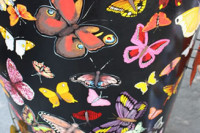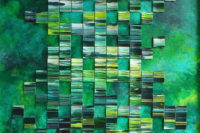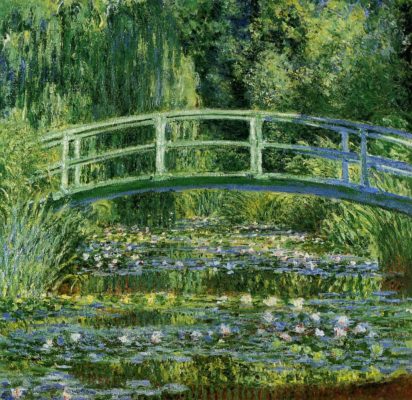Art
The 3 famous works of Vincent Van Gogh that worth nothing when he was alive
The engrossing painting of Parsonage Garden at Neunen in Spring by Vincent van Gogh worth £5 millions has been stolen from the Singer Laren museum, which was originally borrowed from the Netherlands’ Groninger museum. For a legacy like Van Gogh’s, art thefts are not new. 21 paintings were stolen in 1991 from the Van Gogh museum but were immediately recovered though a few were badly damaged. In 2002, there was one more robbery with 2 paintings only to be recovered many years later in 2016.

Parsonage Garden at Neunen in Spring by Vincent van Gogh
Incredible as it may sound, but the legend never would have thought his work could motivate a heist, as Van Gogh could hardly earn a penny through his work when he was alive. It was only after his death, that his work realized its worth. Today, we tell you about the 3 most famous works of the tortured artist and its back story. And, we sincerely hope the stolen Parsonage Garden at Neunen be recovered at the earliest.
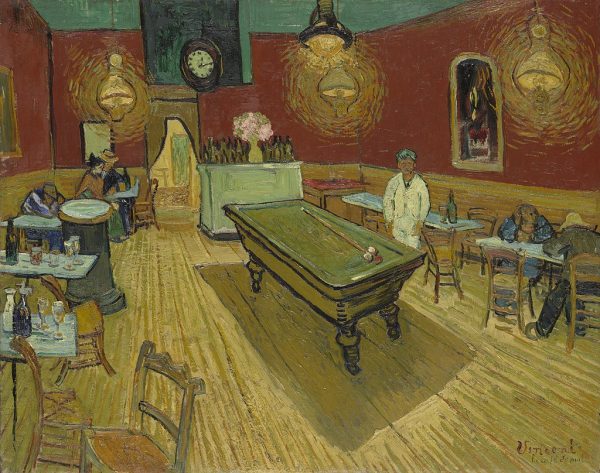
The Night Café or le café de nuit by Vincent Van Gogh (1888) – The Yorck Project (2002) 10.000 Meisterwerke der Malerei – distributed by DIRECTMEDIA Publishing GmbH.
Called one of the ugliest pictures by the creator himself, The Night Café or le café de nuit, is actually the dawn of Expressionism. The masterpiece is also the precursor of Van Gogh’s life long mental illness. In his own words, Van Gogh explains to his brother, Theo, the selection of extreme colours to depict “terrible passions of humanity”.
He intentionally chose the contrast tones to express the raw world of the city at night with the 5 customers in the painting – a drunk aloof from the party, a prostitute and her prowler at one table and two inebriated men probably rambling on everyday miseries. The blazing lamps on the ceilings carefully draw our attention to the main characters of the story including the owner of the café, Ginoux by the billiard table. The painting is owned by Yale University and is exhibited at its Art Gallery in New Haven, Connecticut.
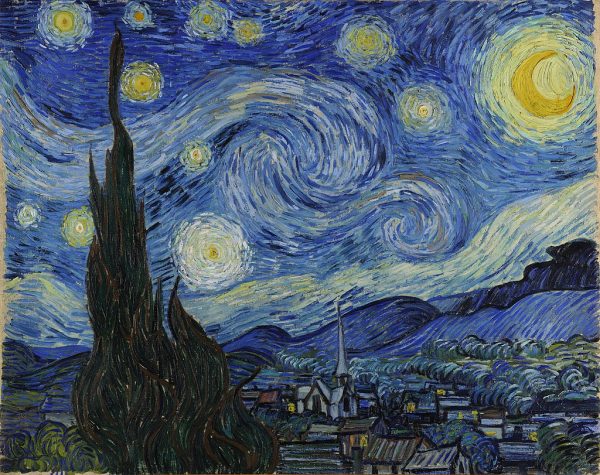
The Starry Night (1889) by Vincent van Gogh – Google Cultural Institute, Public Domain
This doesn’t need an introduction. Every art lover knows about it, every collector wanted to own it at least once in his/her lifetime. Wikipedia says it is one of the most recognized paintings in the history of Western culture. Perhaps, it is the bold palette that catches the attention or perhaps its the turbulent emotion that Vincent wanted to depict for the viewer. But, The Starry Night has never failed to tickle the brains of historians, theorists and artists alike.
With this striking beauty, Van Gogh prompted an enigma that makes it even more sought after. Van Gogh painted in 1889 when he just self-admitted into mental asylum, Saint-Rémy-de-Provence, after he cut his ear in resentment with his friend, Paul Gauguin. Vincent was in terrible distress and was drawn to night skies. During his stay in the asylum, he worked on a series of starry skies but The Starry Night has a place of its own. Both Theo, as an art seller, and Vincent, the creator, didn’t like the work calling it a “failure”. Yet, Van Gogh treasured it until his death and after which it traversed many owners finally retiring in the permanent collection of the Museum of Modern Art, New York in 1941.
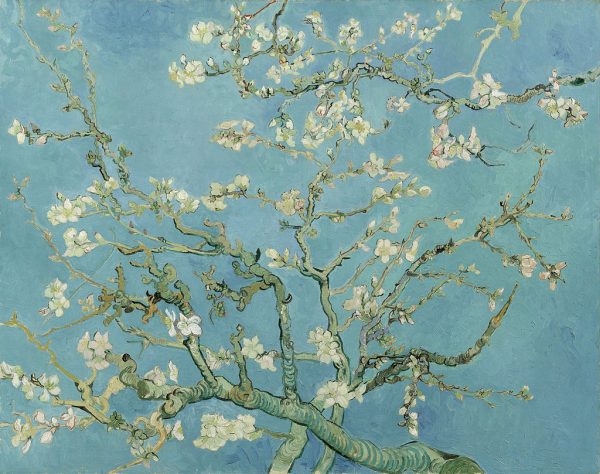
Almond Blossom, Vincent van Gogh (1890) from Van Gogh Museum
Of all his family members, Vincent van Gogh was closest to his brother Theo. Theo and Van Gogh were sibling goals. If there was one person who believed in Van Gogh’s immense brilliance even when the artist himself was doubting it, then it would be Theo. Theo supported his brother both financially and morally by helping him settle in Arles with a studio and selling his art in Paris. The brothers duo shared an indissoluble bond of unconditional love and affection for each other. That’s the reason, Van Gogh was ecstatically happy when he heard the news of his nephew’s birth, Theo’s son, named after the uncle, Vincent Willem van Gogh. Vincent gifted Theo this timeless jewel as the mark of new beginnings for his brother and also for himself.
Because this was also the period when Van Gogh was slipping into depression and was craving for a ray of hope. He found the ideal source of inspiration in the form of Japanese art of woodblock print and the sunny spring season of Arles and Saint-Remy in southern France. The Almond Blossom is special for its occasion but for also for its composition and color scheme. This is very unlike Van Gogh who often prefers strong strokes with contrasting hues. Almond Blossom was a break loose opportunity for Van Gogh in fantasy from his reality. It is now on display at Van Gogh museum in Amsterdam.

